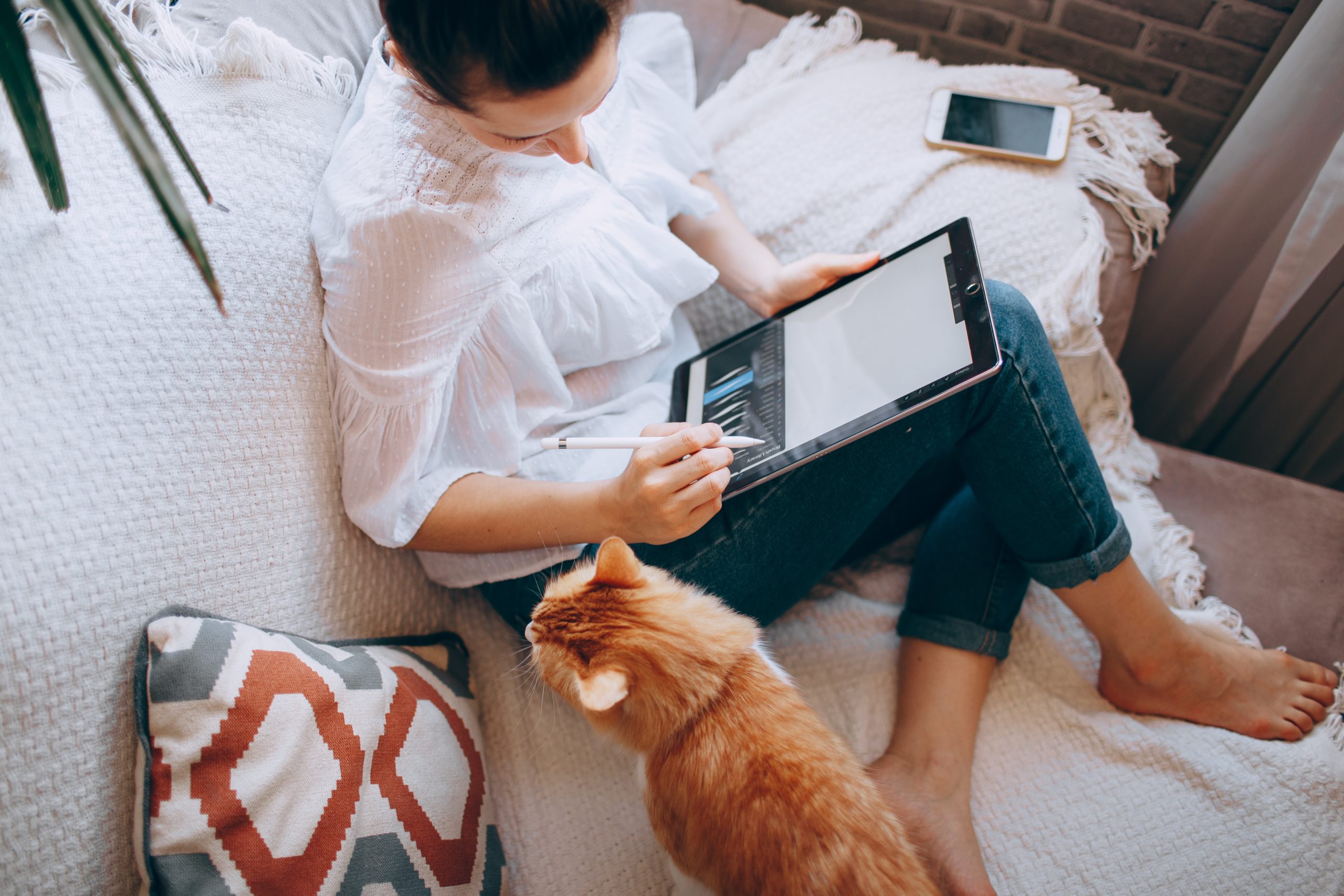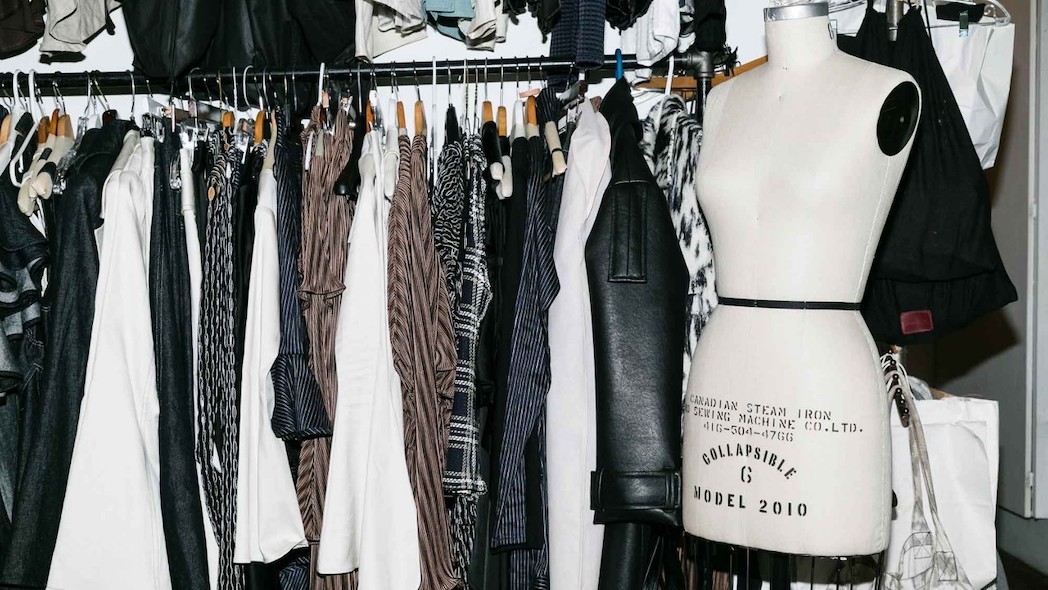Written by: Sanziana Bona
Original Publication: Rent Cafe
This past year, many people had to convert their humble abodes to accommodate a work-from-home office. And that’s not all – but cooking, working out and, in some cases, homeschooling, all took place in the same space. Unfortunately, with all these activities going on inside the home, keeping things organized can be quite a challenge.
So, while we’re all waiting for things to get back to normal, it’s important to make our homes as comfortable and accommodating as possible – for all our needs. And, with 2020 coming to an end, now is a great time to think about what we want to change in 2021 – not only in our lives, but also in our homes – even if this means cleaning and organizing the entire house. To help, we asked 15 experts for their tips on how to turn organizing your home into a New Year’s resolution that you will actually get done. Here are their suggestions:
1. Just Start – Organizing has a Snowball Effect!
At times, it’s better to just do something, without thinking too much about it. According to Michelle Hansen, organizing expert and owner of Practical Perfection, the same applies to organizing.
“Oftentimes, people are so overwhelmed at the thought of decluttering and organizing that they never do it. But, the reality is that the longer you put it off, the more daunting it becomes. You build it up in your mind to be such a big ordeal that nothing ever gets done.
So, turn up some energetic music, get into some comfy clothes and just start. And, if you feel paralyzed at the thought, just start small. Even organizing something as simple as a junk drawer can make a big difference in your life. The best part is that organizing has a snowball effect. When you realize how much better it makes you feel, it motivates you to organize another area. Living in an organized apartment can literally transform your life for the better. So, stop putting it off and start today – even if it’s something small.”
2. Pick One Space to Begin With
According to Laura Sandberg, space solving expert and founder of Let Laura, it’s good to choose one area in which to begin the organizing process. Then, with the intention of decluttering in mind, move on from there.
“Our homes are full of people, love, and stuff. Organizing the stuff makes more room for the things that are important to you, like the people and the love! As a renter and professional organizer who moves and unpacks clients, I see first-hand how expensive moving is. You’ll save so much time, energy, and money each time you move if you clear the clutter (let’s be honest, most likely, you don’t use, love, or need the majority of it) and cultivate your optimal space.
Pro tip: Pick one space to start with. A good one for January is holiday items because it’s fresh in your mind and decision-making will be easier – you know exactly what you used and what you didn’t. Keep this guideline in mind throughout the year and always review your items at the change of a season or occasion.”
3. Approach Bite-Sized Projects for Quick Wins
Decluttering your home can be overwhelming. But, starting with small projects, as opposed to diving straight into big ones, allows you to build up the energy and motivation not to give up after the first project.
“To start with decluttering, my number one tip is, begin with bite-sized projects,” said Ester Konz, personal organizer and blogger at Uncluttered Simplicity. “They are simple ways that give you quick wins, which will then inspire you to tackle those bigger projects that you’ve been putting off.
Tackle the junk drawer, fold and put away the laundry, make the bed, clear your bathroom counter, address a clutter hotspot or do a five-minute trash collection: a few practical decluttering examples that will only take 5 minutes a day. Remember, a journey is taken step by step, and this new year, the same goes for decluttering your home or life.”
4. Create Simple, Common Sense Habits
As Juli Oliver, professional organizer and founder at OrganizeNY, simply puts it:
“If you open it, close it. If you take something out, put it back. If you turn it on, [then] later, turn it off. Common sense, right? But, creating a new habit even as simple as these takes time. Don’t get frustrated, just keep doing it and, eventually, it will click without a second thought.”
5. Maximize All Available Space
Make sure you use all the space you have, but use it smartly. David Cusick, CSO and executive editor of House Method, has three main tips:
“Utilize the space under the bed. With limited space in a rental apartment, you need to take advantage of this storage opportunity. You can store seasonal items and other bulky stuff you have under your bed. Just put them in storage boxes that will fit under the bed.
Maximize your wall space. Free up some floor area by taking advantage of the wall space you have. Install hanging shelves and organizers, which will also allow you to see your stuff quite easily.
Clear the countertops. Whether it’s in the bathroom or the kitchen, a clean and uncluttered countertop can make your apartment look neat and organized. Organize the items in the drawers, instead.”
6. Swap Your Stuff More Often
Don’t focus on swapping things in your home just twice a year based on weather.
“You’re probably used to a seasonal swap two times a year when the weather changes,” said Rob Truglia, senior brand marketing manager at MakeSpace. “Now that we spend so much time at home, it’s important to rotate our décor and furniture to match smaller occasions or micro seasons. Beyond just weather, think about what items can enhance your experience based on holidays, hobbies or design trends. This will leave you with a home that’s more inspiring and spacious. If you don’t have the storage to accommodate this, consider full-service storage solutions to make things easier.”
7. Nonessential Item to Rid Your Home Of – Paper Clutter
As Amy Bloomer, MA – organizational psychology at Columbia University and professional organizer at Let Your Space Bloom – states, when it comes to organizing, it’s important to start by ridding your home of nonessential items in 2021.
When it comes to paper clutter, “I encourage my clients to deposit all catalogs and junk mail into a recycling bin before entering their homes. Place magazines where you will read them (on a bedside table) and commit to recycling them immediately after reading them. If there is any information that you want to save, take a picture of it and move on.”
Another thing is to “recycle cardboard packaging throughout your home, stripping excess cardboard packaging from nonperishable food items, toilet paper, medication and frozen food, just to name a few. Once you recycle all that cardboard, you’ll realize you have more space than you originally thought.
The above is what I would consider quick and easy, low-hanging fruit. Many people are busier than ever during this quarantine period trying to manage homeschooling, working, and household responsibilities. It’s important to be realistic about finding small projects that are doable with limited time.”
8. Discard the Cardboard Boxes
Rhea Becker, organizer and decluttering expert at The Clutter Queen, also stands by getting rid of cardboard boxes.
“I know, you’re convinced you will need the box if you decide to return something you bought,” she said. “OK. But, chances are, you won’t. Or, you believe that you will seek out these boxes when it comes time to move. Not likely.
Here are a few other reasons you need to discard the cardboard: boxes take up too much valuable space in your apartment, they create visual chaos, and they attract rodents.”
9. Place a “Moratorium” on Bringing Anything Into Your Home That Isn’t Perishable
It’s important not to feel the need to fill the available space we have in our homes with just anything. Lisa Dooley, organizing coach at Your Organized Life, advises not to bring things into your home unless you have a good reason and purpose for it.
“The challenge for most of us is that we buy, buy, and buy some more because ‘it’s on sale,’ ‘I’m bored,’ ‘I think I can find a use for it,’ etc. In addition to buying things, we accept as gifts things [that] others are getting rid of – an extra couch, bookcase, holiday decorations, etc. But space is finite and having more can easily become overwhelming. And, we’ve achieved the opposite effect by adding more stuff to care for, replace, maintain and repair than we had before. Instead, make your resolution to purge the unneeded and unused – and don’t just fill up space! Donate items through your local community sites, so it finds an appropriate ‘good home.’”
10. When in Doubt, Do it NOW
Delaying your organization will only lead to more of a mess and clutter multiplying, thereby making it that much harder to take care of and get sorted out. For this reason, Lucy Milligan Wahl, a professional organizer at LMW Edits LLC, suggests doing it now:
“This resolution has all sorts of applications! When you see a piece of trash, throw it out. When you realize you no longer like or use something, put it in a bin for donation. When you notice something that belongs to someone else in your household that’s out of place, put it in their room or workspace. When your laundry bin is full, start a load. When your sink is full, wash the dishes.
Dishes aren’t clutter until the sink gets full and household members start leaving dishes in other spots. Laundry isn’t clutter until dirty clothes overflow onto furniture and the floor and get mixed up with other stuff. Trash isn’t clutter until the trash can fills up and you stop collecting it.
The best part about making the resolution to do things NOW is that it will help you decrease the total amount of clutter in your home over time – without needing to take on a big, top-to-bottom reorganization project.”
11. Take Advantage of Vertical Space to Increase Storage Options
Susan Santoro, a professional organizer and blogger at Organized 31, believes that it’s essential to make the most of any space you have in your home to store and organize things.
“In an apartment, it’s especially important to take advantage of vertical space to increase your storage options. Apartments have two often-overlooked areas that I recommend you fully utilize. My first and favorite tip is to use the often-overlooked space at the top of closets above the shelf. You can add inexpensive shelf risers and temporary hooks to the space above the closet shelf to add up to 20% more storage space. This space is perfect for items that are not used often, such as out-of-season clothing, holiday decorations, and suitcases. An inexpensive, folding step stool makes this otherwise inaccessible, hidden space useful. Secondly, you can use the space on top of kitchen cabinets to store seldom-used appliances, mixing bowls, baking pans, and other large items. Shelf risers increase the usable space here, too. Use decorative baskets or bins if you’d like to hide the items from view.”
12. Be Realistic About How Much Time and Energy a Task Requires
Before you begin organizing an area of your home, make sure you have enough time and energy to finish. Ben Soreff, a professional organizer at House to Home Organizing, suggests that the most important thing when it comes to organizing is how much time it takes to get it done.
“Many people make resolutions regarding organizing their space. However, it is important to remember to be realistic about how much time you need to dedicate to the task and your energy level. Most people don’t finish what they start around the house because life gets in the way, especially if you add kids into the mix. Organizing isn’t about stuff, it’s about time. Tackle projects in bite-sized chunks. Don’t pull everything out of the closet and then quickly shove it back in when the phone rings for a work emergency, leaving it worse off than if you hadn’t ‘cleaned up.’ I suggest setting the smartphone timer and focusing on 15-minute sessions.”
13. Make Your Home More Productive
Wendy Yates, principal designer at Abigail-Elise Design Studio, says, organizing your home allows you to make the most of what it has to offer.
“Our biggest trick is to utilize multipurpose pieces in your new plans. This includes tables with storage, coffee tables that have two different heights for different activities, and movable screens – especially if you are working from home without a separate office.”
14. Donate, Give Away or Sell Clothing That No Longer Fits
We tend to hold on to old clothing in the hopes that at one point in the future, we will wear it again.
“Start 2021 with a clean slate by donating, giving away, or selling clothing that no longer fits you,” said Jordan Stolch, expert style advisor and founder of MiKADO. “We often hold on to these items out of sentimental attachment or strictly because we’ve spent money on them. But, when space is limited in our homes, unworn clothes are occupying very valuable real estate. Not only do clothes that no longer fit us trigger an adverse mental reaction every time we look at them – reminding us we’re no longer that size – but if we were to lose the weight in the future, it’s almost guaranteed we’d want to celebrate by investing in a new wardrobe.”
15. Focus on Kitchen Organization
There are many things to invest in that are extremely beneficial for your home, especially to organize your kitchen. Saul Cerni, founder of Home ISD, suggests:
“Use plastic containers to organize perishables on every shelf in the pantry, the fridge, and every cupboard. Categorize everything as you do it, so you can find everything you need easily. Not only [does] it help to keep the kitchen tidy, but it makes it much cleaner and odor-free as well. For renters, it also prevents any damage to the fridge and the shelves that spoiling food can cause.”
With these tips in mind, set your own goals for what you expect to achieve as far as organizing your home in the new year. Make sure to be realistic about your resolutions to ensure you can cross them off your list as being done. Here’s to a new year and a newly organized home!
Original Rent Cafe article here.





